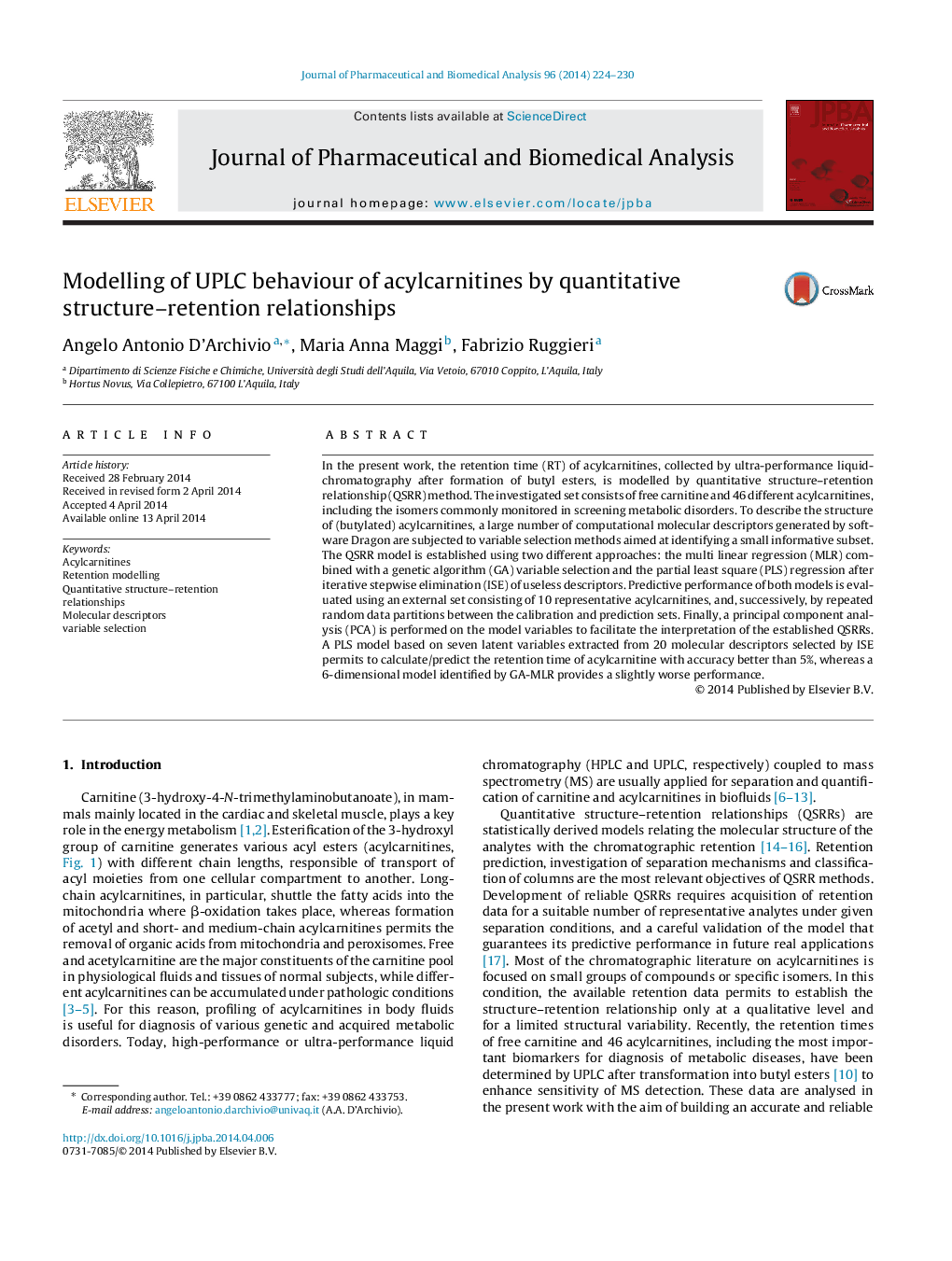| کد مقاله | کد نشریه | سال انتشار | مقاله انگلیسی | نسخه تمام متن |
|---|---|---|---|---|
| 1221680 | 1494639 | 2014 | 7 صفحه PDF | دانلود رایگان |

• Retention behaviour of acylcarnitines is accurately modelled by QSRR.
• Two alternative multilinear regression methods are compared.
• We identify the structural factors influencing retention of acylcarnitines.
In the present work, the retention time (RT) of acylcarnitines, collected by ultra-performance liquid-chromatography after formation of butyl esters, is modelled by quantitative structure–retention relationship (QSRR) method. The investigated set consists of free carnitine and 46 different acylcarnitines, including the isomers commonly monitored in screening metabolic disorders. To describe the structure of (butylated) acylcarnitines, a large number of computational molecular descriptors generated by software Dragon are subjected to variable selection methods aimed at identifying a small informative subset. The QSRR model is established using two different approaches: the multi linear regression (MLR) combined with a genetic algorithm (GA) variable selection and the partial least square (PLS) regression after iterative stepwise elimination (ISE) of useless descriptors. Predictive performance of both models is evaluated using an external set consisting of 10 representative acylcarnitines, and, successively, by repeated random data partitions between the calibration and prediction sets. Finally, a principal component analysis (PCA) is performed on the model variables to facilitate the interpretation of the established QSRRs. A PLS model based on seven latent variables extracted from 20 molecular descriptors selected by ISE permits to calculate/predict the retention time of acylcarnitine with accuracy better than 5%, whereas a 6-dimensional model identified by GA-MLR provides a slightly worse performance.
Figure optionsDownload as PowerPoint slide
Journal: Journal of Pharmaceutical and Biomedical Analysis - Volume 96, 5 August 2014, Pages 224–230